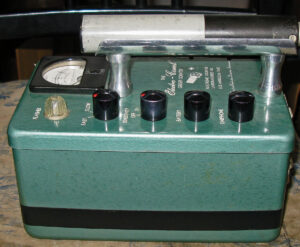Back to: Computer Studies JSS1
Welcome to class!
In today’s class, we shall be talking about the electro-mechanical counting devices. Please enjoy the class!
Electro-Mechanical Counting Devices
Electro-mechanical counting devices were the groundbreaking inventions that paved the way for the modern computers we use today. These devices combined mechanical and electrical components to perform calculations, marking a significant advancement in computational technology.
They are machines that utilize both mechanical and electrical principles to perform calculations. They were developed in the 17th and 18th centuries and played a crucial role in the evolution of computing.
Several notable electro-mechanical counting devices emerged during this era, each contributing to the advancement of computing:
- John Napier’s Bones (1617): These ingenious rods, also known as Napier’s rods, were used for multiplication and division.
- Blaise Pascal’s Calculator (1642): This mechanical calculator, also called the Pascaline, could perform addition, subtraction, multiplication, and division.
- Gottfried Wilhelm von Leibniz’s Calculator (1671): Expanding on Pascal’s design, Leibniz’s calculator could handle all four arithmetic operations and even square roots.
- Joseph Marie Jacquard’s Loom (1801): This revolutionary invention introduced punched cards to control weaving patterns, laying the foundation for automated data processing.
Electro-mechanical counting devices had a profound impact on society, revolutionizing various fields, including:

– Science and Engineering: Complex calculations could be performed more efficiently, enabling scientific breakthroughs and engineering advancements.
– Business and Commerce: Accounting and financial calculations became more accurate and time-saving, improving business operations.
– Education and Research: Mathematical and scientific research could be conducted more effectively, leading to new discoveries and knowledge.
Although electro-mechanical counting devices have been superseded by electronic computers, their legacy lives on. These devices laid the groundwork for modern computing, demonstrating the potential of combining mechanical and electrical principles to solve complex problems. They serve as a reminder of the ingenuity and perseverance of those who dared to innovate and paved the way for the technological marvels we enjoy today.
We have come to the end of today’s class. I hope you enjoyed the class!
In the next class, we shall be discussing more about the electro-mechanical counting devices.
In case you require further assistance or have any questions, feel free to ask in the comment section below, and trust us to respond as soon as possible. Cheers!
Question Time:
- What were the key characteristics of electro-mechanical counting devices?
- Compare and contrast the Pascaline and Leibniz calculators.
- How did Joseph Marie Jacquard’s loom revolutionize the textile industry?
- What was the significance of electro-mechanical counting devices in the evolution of computing?
- How did electro-mechanical counting devices influence various fields such as science, business, and education?

If “John Napier’s Bone” were rods, doesn’t that make them part of the early “mechanical” counting devices?
is abacus among